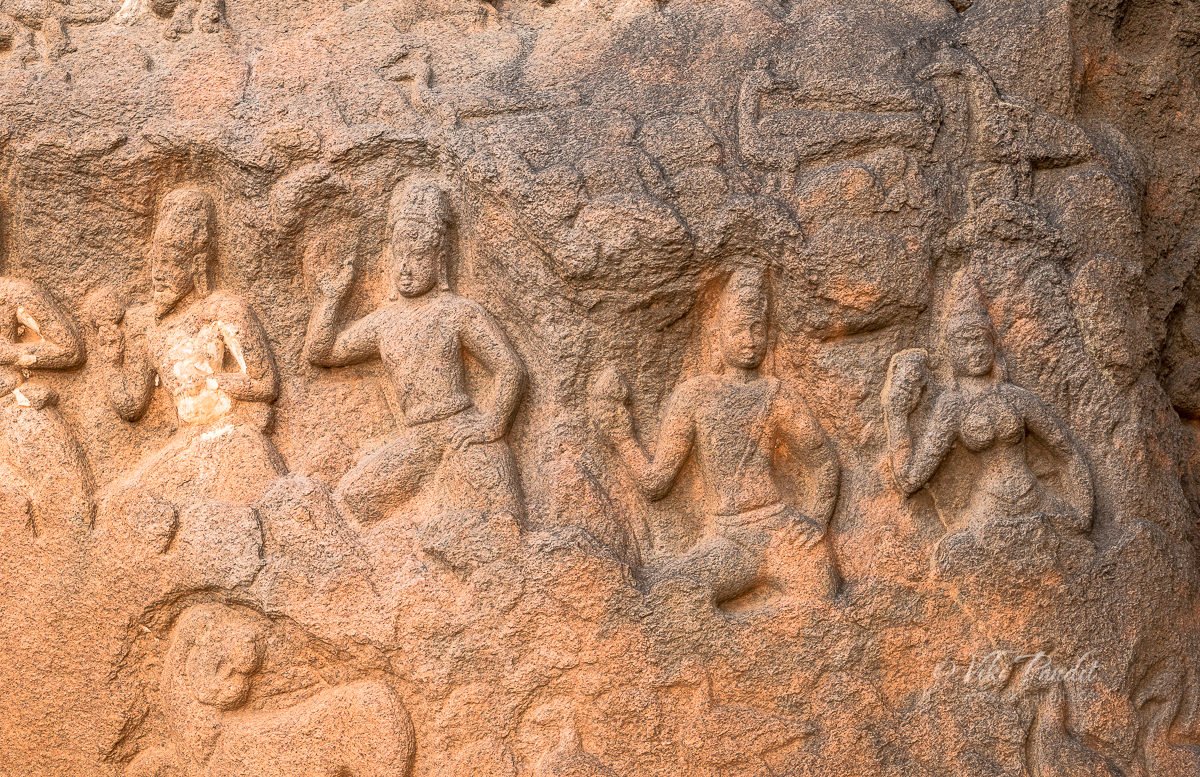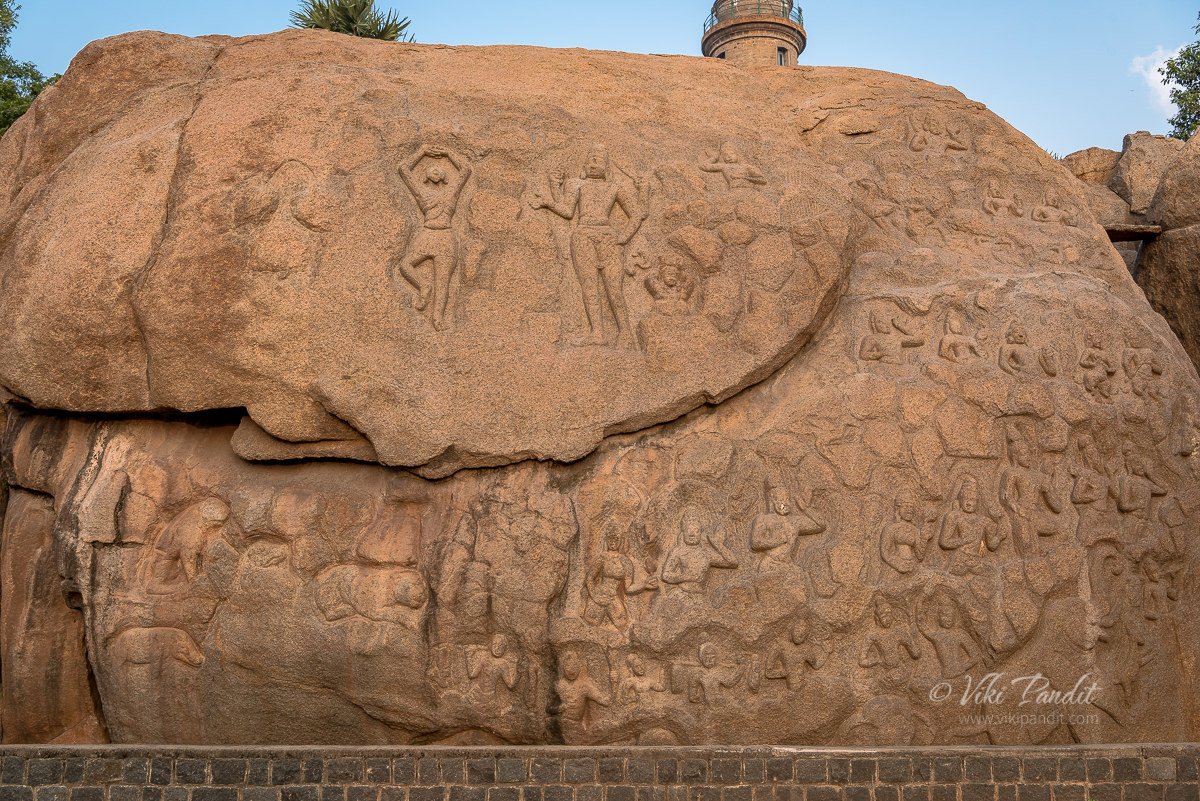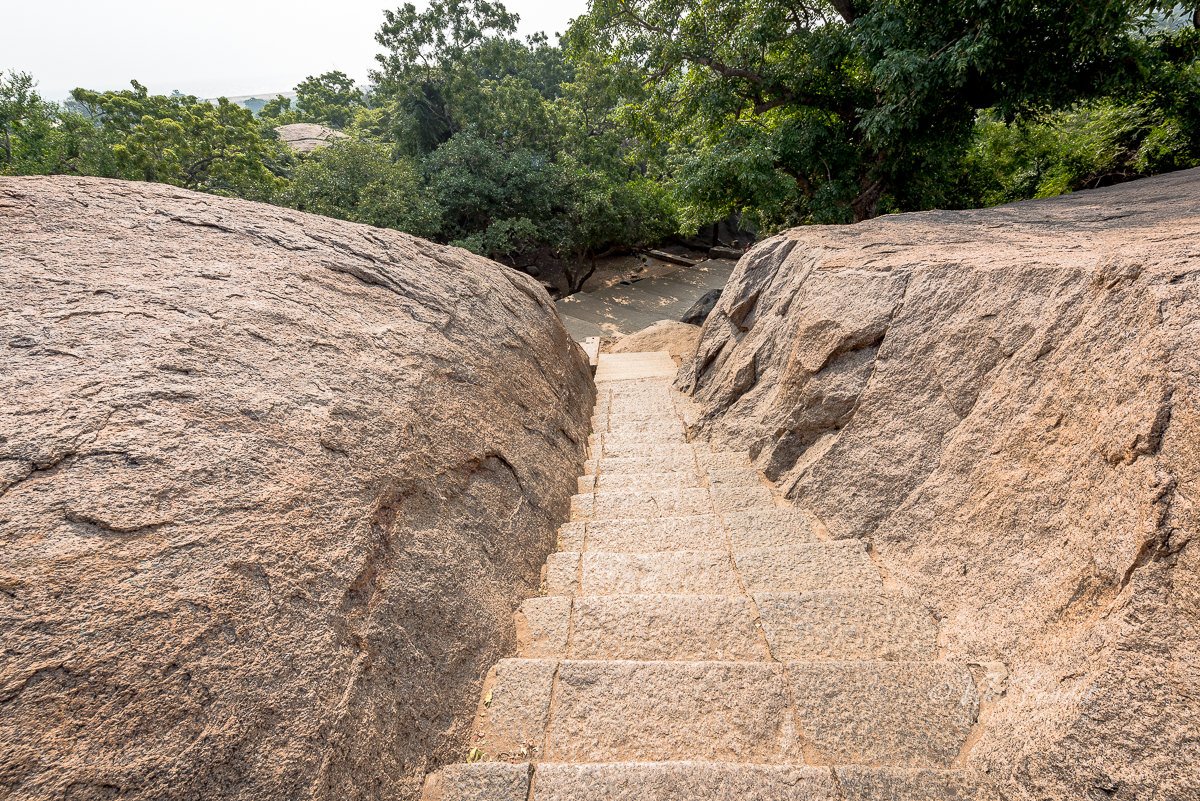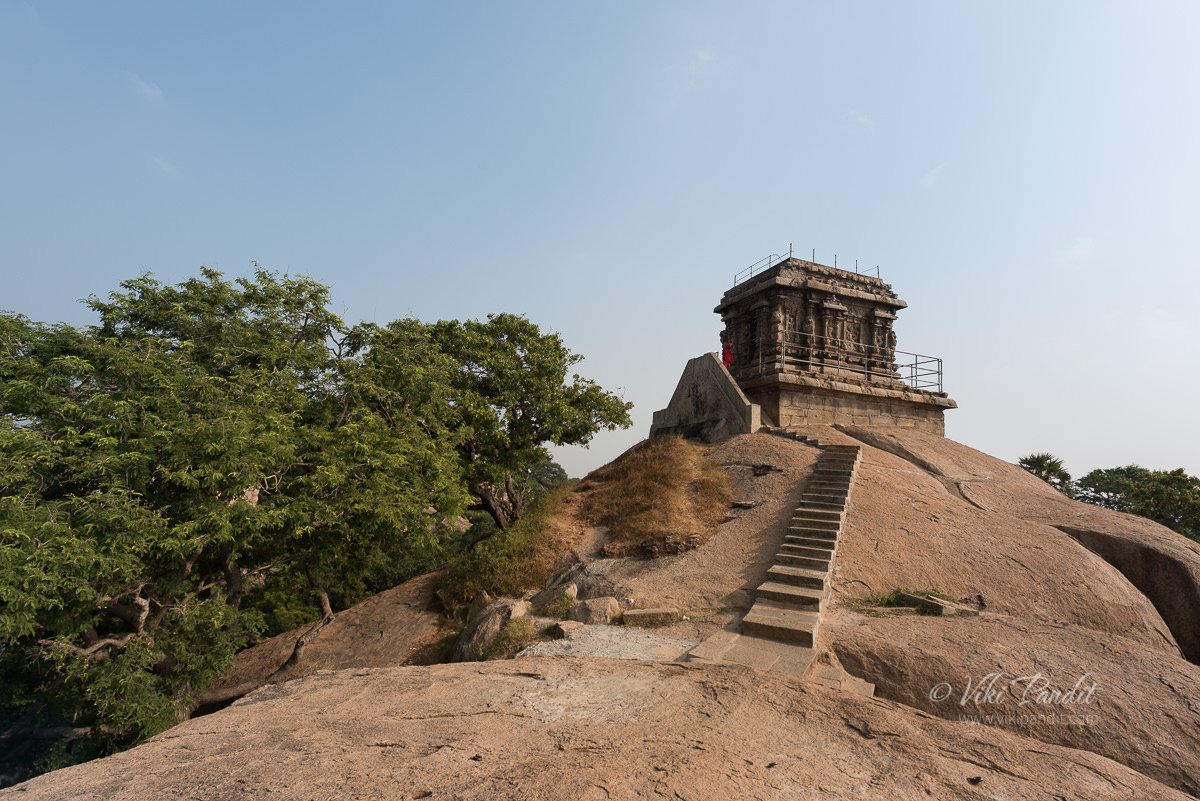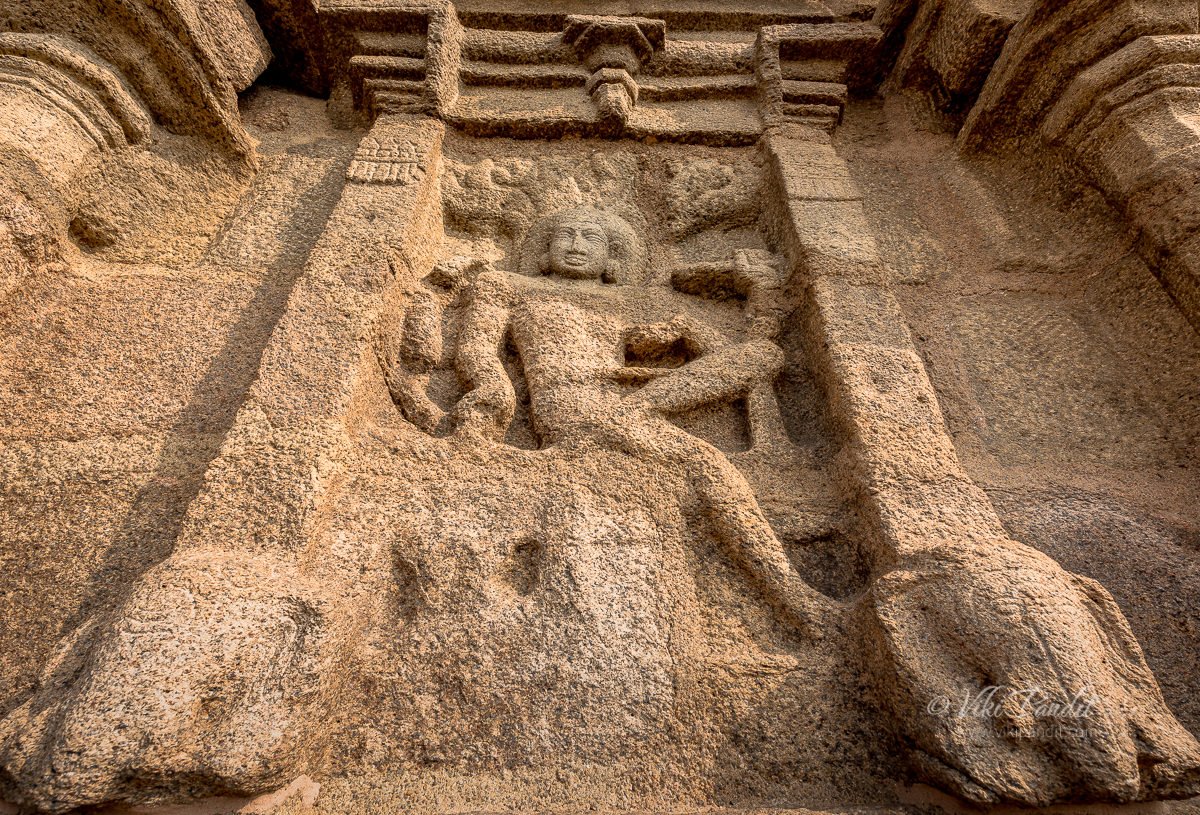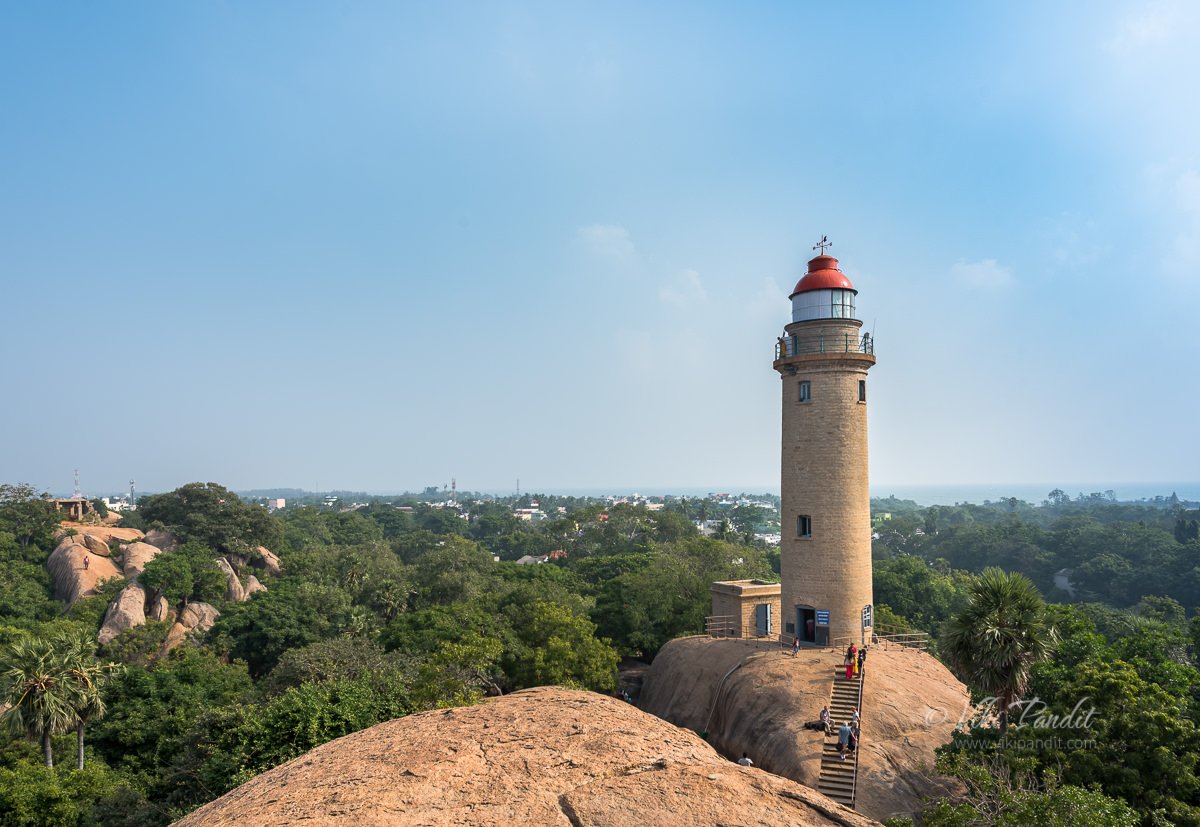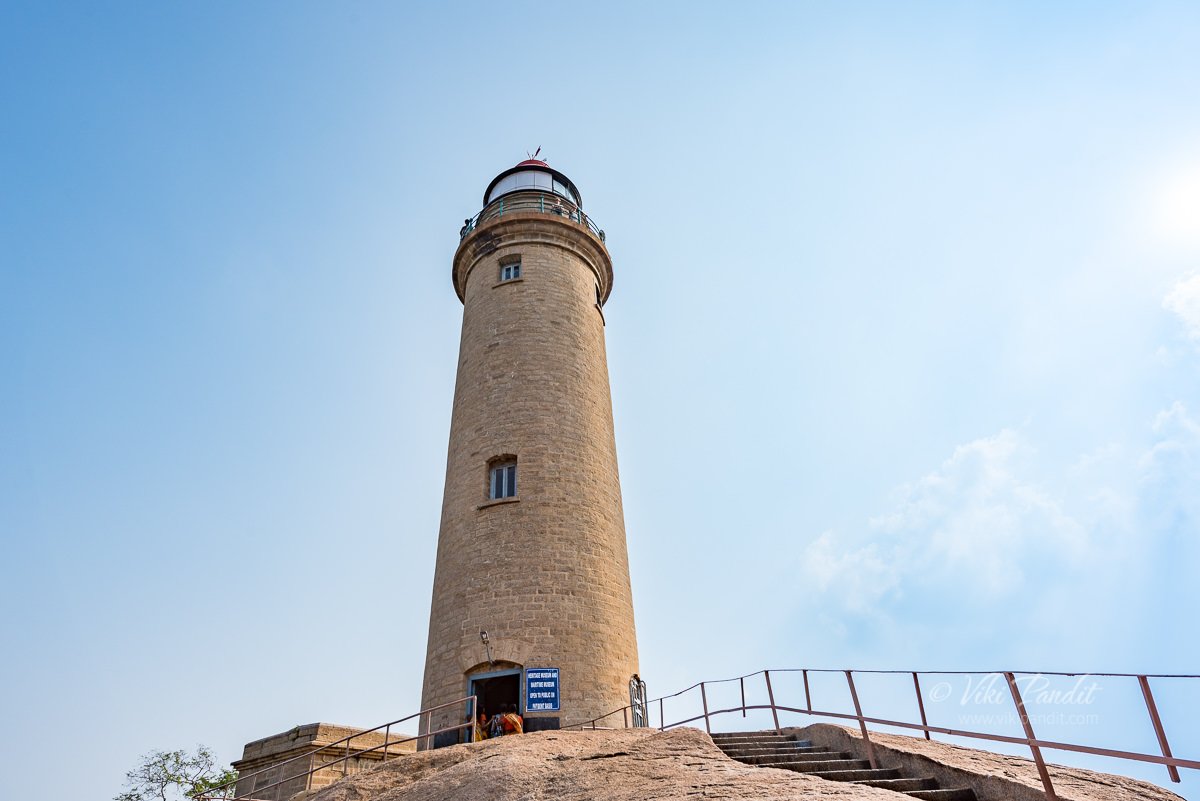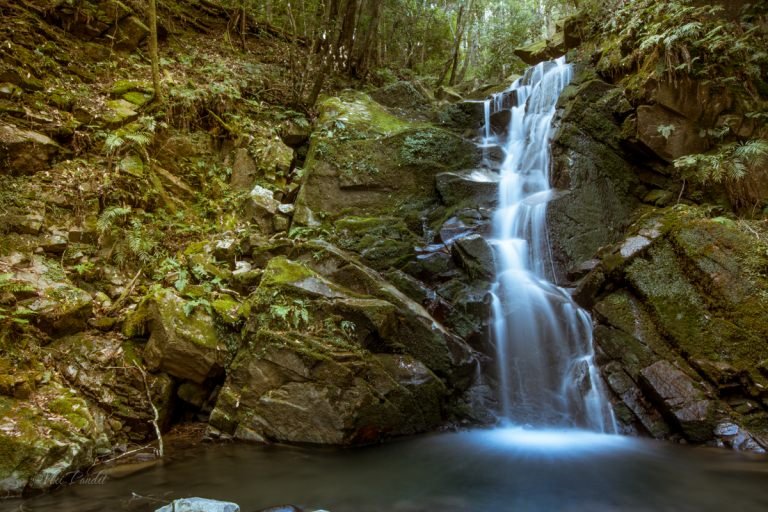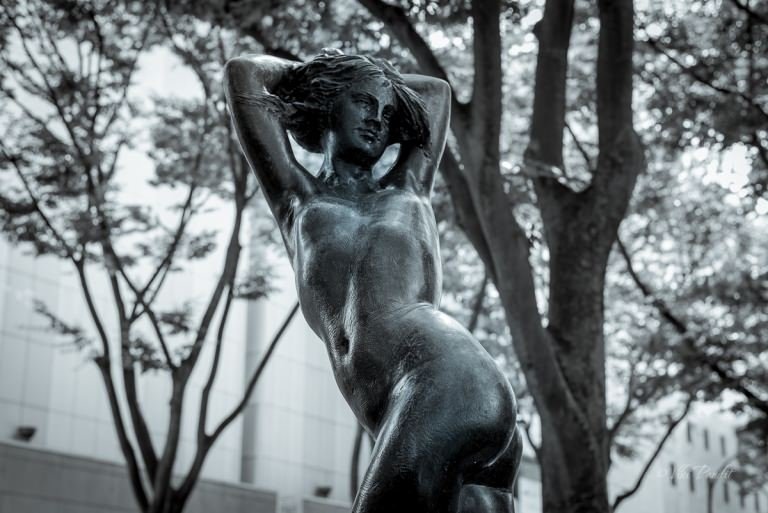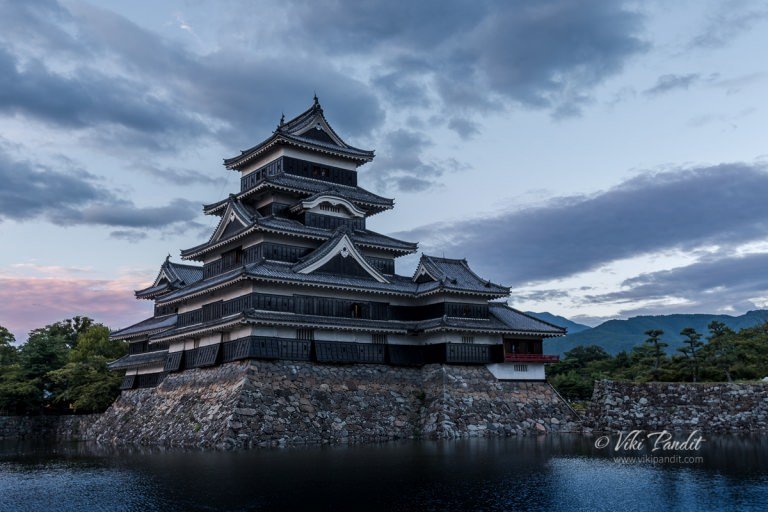Before we head back to Bangalore, we decided to stop at Mahabalipuram’s old lighthouse. Also known as Olakkanesvara Temple, it is India’s oldest lighthouse, built around 640 CE during the reign of Pallava king Rajasimha.
This lighthouse/temple is categorised as one of the “Group of Monuments” at Mahabalipuram that were designated as a UNESCO World Heritage Site since 1984. Currently, the Pallava era lighthouse is a protected monument, maintained by the Archaeological Survey of India.
Olakkanesvara Temple
The blue gated entrance to the lighthouse is situated a few meters away from the main Mahabalipuram hillock entrance. However one can also visit the lighthouse from the hillock through connected internal paths.
Just outside the entrance one can find a huge wall relief almost similar in stature to the the popular relief known as “Descent of the Ganges.”
Interestingly, this wall relief contains a clone of the depiction of Arjuna’s penance that can also be seen on the edge of the “Descent of the Ganges” relief. For some reason this wall gets a step brotherly treatment as it lies unprotected along the road with fumes from vehicles causing continuous damage to this heritage artifact.
There was no visible parking area nearby. So, I parked my car along the road on the durt road near the entrance.
History of Olakkanesvara Temple
Written records mention that Mahabalipuram was a busy port under the Pallavas as early as the 7th century AD. Bonfires were lit on Mahabalipuram hillock, it being the highest point near the shore, to aid the mariners in the dark. This protected site had warning fires lit on its roof from the 7th century until the 20th century.
Like the Shore Temple, the Olakkannesvara Temple is a structural temple. Its name translates to “flame eye.” It is situated directly above the Mahishasuramardini mandapa on a hillock which provides scenic views of the town. Prior to the construction of the new lighthouse at this site in 1900, the roof of the Olakkannesvara Temple served as the lighthouse.
The climb is not too steep. Stone steps have been chiseled out of the rocky hill to assist visitors.
The structure is built of grey-white granite and faces East. The shikhara or tower of the temple is interpreted to have been built originally to the same style as the Shore Temple tower in Dravidian architectural style. This temple was dedicated to lord Shiva. One can walk around the temp along a narrow circular path. But with no barriers at the edge of the hillock, people with vertigo might feel a flutter. I did.
On each of the four walls are chiseled different avatars of Shiva. On the exterior walls, there are two sculpted images in the niches of the ardha-mandapa. Enclosed within pilasters, these images of Shiva as Kalari killing “Kaala” (Yama) are later additions, not attributable to the Pallavas.
On external walls of the main shrine, there are other niches or devkoshtas; on the south wall the sculpture is of Shiva as Dakshinamurthi under a tree in seated posture, on the west face an image of Shiva and Parvati seated on Kailash Mountain with Ravana trying to shake the mountain.
There is another image on the north wall is of Shiva in the posture of Nataraja. I hear hat sometime towards the end of the eighteenth century, the sivalinga was stolen from the temple.
Just a few meters away lies the new lighthouse.
Climbing down from the old lighthouse we walked towards the new lighthouse for a closer view.
New Lighthouse
The new Lighthouse was built at the turn of the 20th century to keep ships away from the rocky Mahabalipuram headland. The first light was commissioned here in 1887. With a circular masonry tower made of stone, it became fully functional in 1904. Its source of light comes from dis-chargeable lamps, which rotate in bowls of mercury.
Thanks for reading. Please leave me a comment if you liked the post or follow my journey as I visit the ancient monkey kingdom of Kishkindha.
Disclaimer: The information presented in this article is based on the time I visited the premises. Note that there might be changes in the prices of merchandise and admission fees that might have occurred after this article was published. At times the facility might also be closed for repairs or for variety of other reasons. Kindly contact the facility or facilities mentioned in this article directly before visiting.
Usage of this site indicates acceptance of my Terms and Conditions.
Credits: The historical information presented herein is gathered mostly from local guides that were re-inforced via historical writings.
